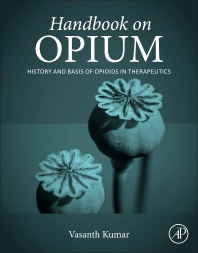Academic Press
- 1st Edition
- February 4, 2022
- Varun Bajaj + 1 more
- English
- Paperback9 7 8 0 3 2 3 9 1 1 9 7 9
- eBook9 7 8 0 3 2 3 9 1 4 1 2 3

Artificial Intelligence-Based Brain-Computer Interface
- 1st Edition
- January 31, 2022
- S. Sivaramakrishnan + 1 more
- English
- Paperback9 7 8 0 3 2 3 9 1 1 3 8 2
- eBook9 7 8 0 3 2 3 9 1 3 8 4 3

Bacterial Bioflocculant for Multifunctional Features
- 1st Edition
- January 30, 2022
- Seyed Mohammad Kazem Aghamir
- English
- Paperback9 7 8 0 3 2 3 9 9 8 8 4 0
- eBook9 7 8 0 3 2 3 9 8 3 9 7 6

Liquid Biopsy in Urogenital Cancers and its Clinical Utility
- 1st Edition
- Volume 101
- January 29, 2022
- English
- Hardback9 7 8 0 1 2 8 2 0 8 0 3 8
- eBook9 7 8 0 1 2 8 2 0 8 0 4 5

Lipids in Plants and Algae: From Fundamental Science to Industrial Applications
- 1st Edition
- Volume 172
- January 29, 2022
- Donald L. Sparks
- English
- Hardback9 7 8 0 3 2 3 9 8 9 5 3 4
- eBook9 7 8 0 3 2 3 9 8 9 5 4 1

Advances in Agronomy
- 1st Edition
- January 29, 2022
- Vasanth Kumar
- English
- Paperback9 7 8 0 3 2 3 9 0 9 0 3 7
- eBook9 7 8 0 3 2 3 9 0 9 0 4 4

Handbook on Opium
- 1st Edition
- Volume 153
- January 29, 2022
- English
- Hardback9 7 8 0 1 2 8 2 4 4 8 5 2
- eBook9 7 8 0 1 2 8 2 4 4 8 6 9

RAS: Past, Present, and Future
- 1st Edition
- Volume 3
- January 28, 2022
- Michele Laraia
- English
- Paperback9 7 8 0 3 2 3 8 5 7 3 6 9
- eBook9 7 8 0 3 2 3 9 8 4 6 4 5

Nuclear Decommissioning Case Studies
- 1st Edition
- Volume 662
- January 28, 2022
- English
- Hardback9 7 8 0 3 2 3 9 0 7 3 5 4
- eBook9 7 8 0 3 2 3 9 0 7 3 6 1

Selenoprotein Structure and Function
- 1st Edition
- Volume 187
- January 28, 2022
- English
- Hardback9 7 8 0 3 2 3 8 5 3 0 3 3
- eBook9 7 8 0 3 2 3 8 5 3 0 4 0

Micro/Nanofluidics and Lab-on-Chip Based Emerging Technologies for Biomedical and Translational Research Applications - Part B